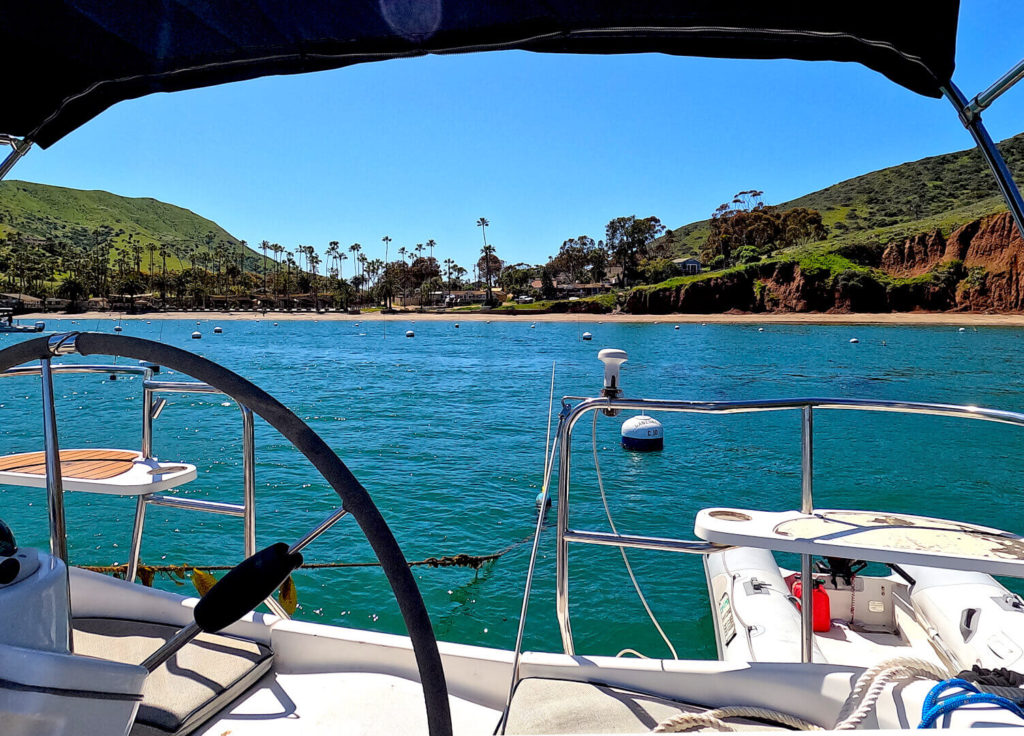
Do you have what it takes to sail the 22 mile escape from the hustle and bustle of Los Angeles to Catalina Island? We took a four day charter to find out how challenging, expensive, and worthwhile this trip can be.
Catalina Island lies 22 nautical miles (25 landlubber miles) off the coast of Los Angeles, California. The island is just far enough from the hustle of LA that it offers some great opportunities to find natural solitude. It also hosts a very civilized tourist town with glamorous historical architecture along with full amenities. We chartered a 36-foot Hunter sailboat for four days to see if the promises of cost and convenience can live up to the Busy Boater’s expectations.
What’s Hot
- Easy to get to your boat, easy to get to the island
- Wide variety of anchorages, moorings and activities
- Mild, predictable weather
What’s Not
- Expensive mooring fees and on island provisions
- Can be crowded
Catalina Island is 17 miles long, but only 1/2 to 6 miles wide. A circumnavigation of the island is over 40 miles, but it’s just over 20 miles away from from Los Angeles. That makes it roughly the same size as New Providence (Nassau) in the Bahamas. Unlike Nassau, however, Catalina has a steep elevation, rising over 2,000 feet from the ocean and it is mostly uninhabited. Substantially all of the island’s human residents live in the City of Avalon towards the southeast end of the island. Further north, the island has an isthmus that’s less than half a mile wide. This area, called Two Harbors, is the only other publicly developed part of the island. Beyond this, there are dozens of small bays and beaches that dot the island, hiking trails, and a few private developments.
What to Do on your Catalina Island Boat Charter
Avalon
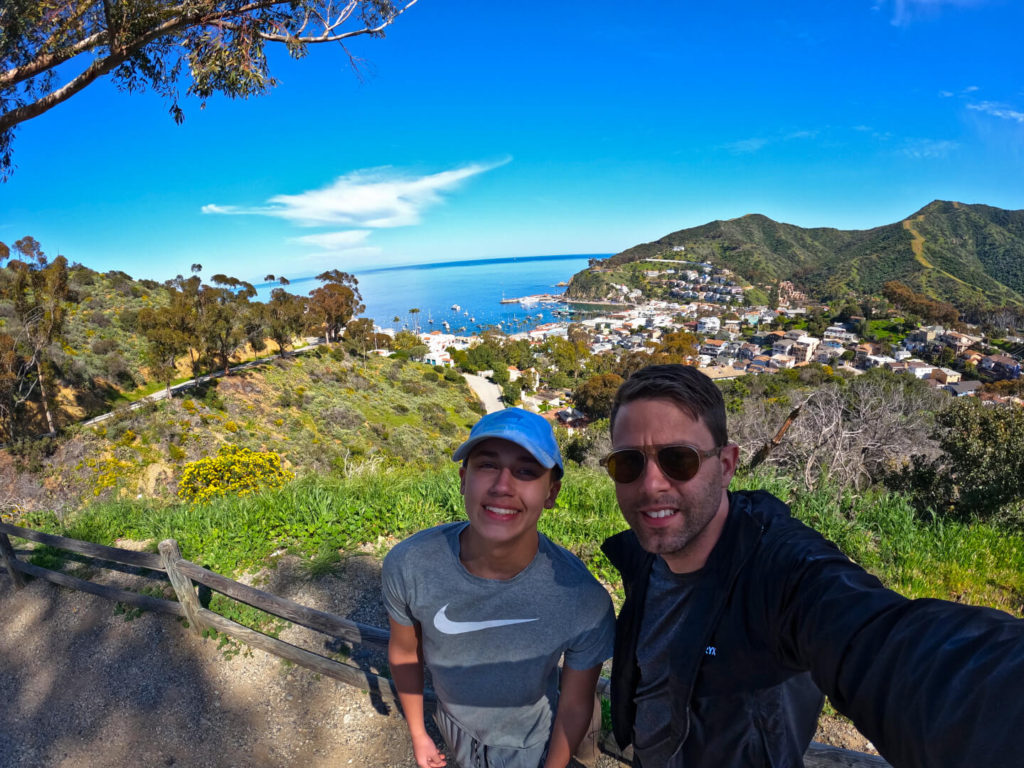
In terms of capacity, Avalon is the largest harbor on Catalina. Along with two adjacent bays, it can accommodate over 300 moored vessels. This harbor serves as a popular stop for cruise ships running between Long Beach and Mexico. It also hosts most of the ferry traffic for the island. In Avalon, you’ll find all manner of structured activities:
- Rent a chair to sunbathe on a groomed beach
- Rent a golf cart to see some of the most interesting landmarks and vistas in the town
- Head to the Casino for a history tour or take in a movie at the first movie theater equipped for talking movies.
- Piss your money away on candy and cleverly worded t-shirts
- People watching
- Attend the Annual Catalina Wine Mixer in June (yes, its a real thing).
Two Harbors
Two Harbors is exponentially quieter than Avalon, but it is the only other area where you’ll find commerce, for the most part, on Catalina Island.

Two Harbors has a very well stocked, and appropriately (high) priced general store as well as a restaurant that presents three menus and four dining areas out of a single kitchen. We preferred the $25 bowling alley grade pizzas at the general store (served hot) to the price and quality of fare at the restaurant(s).
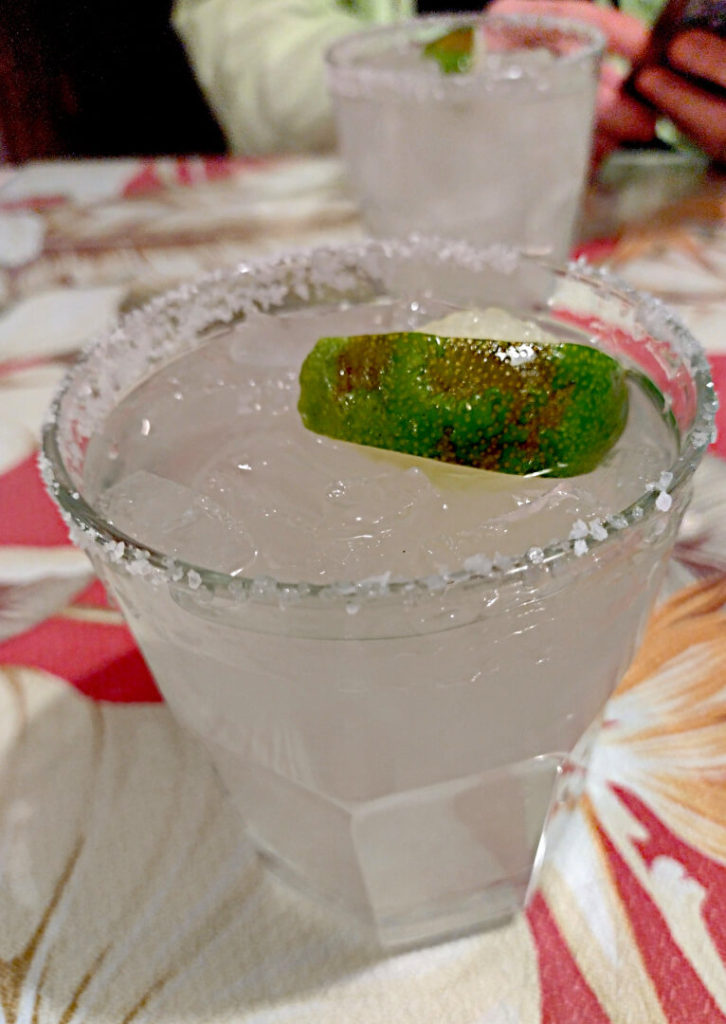

During the high season there’s a well-groomed sandy beach that rents chairs ($40 per pair) and cabanas ($300) with service from the restaurant. If you don’t want to pony up for the chair rentals, you can eat at picnic tables behind the cabanas or set up camp on the public beach below…just note that the natural beach is made up of larger, pointy rocks and shells as opposed to soft sand.
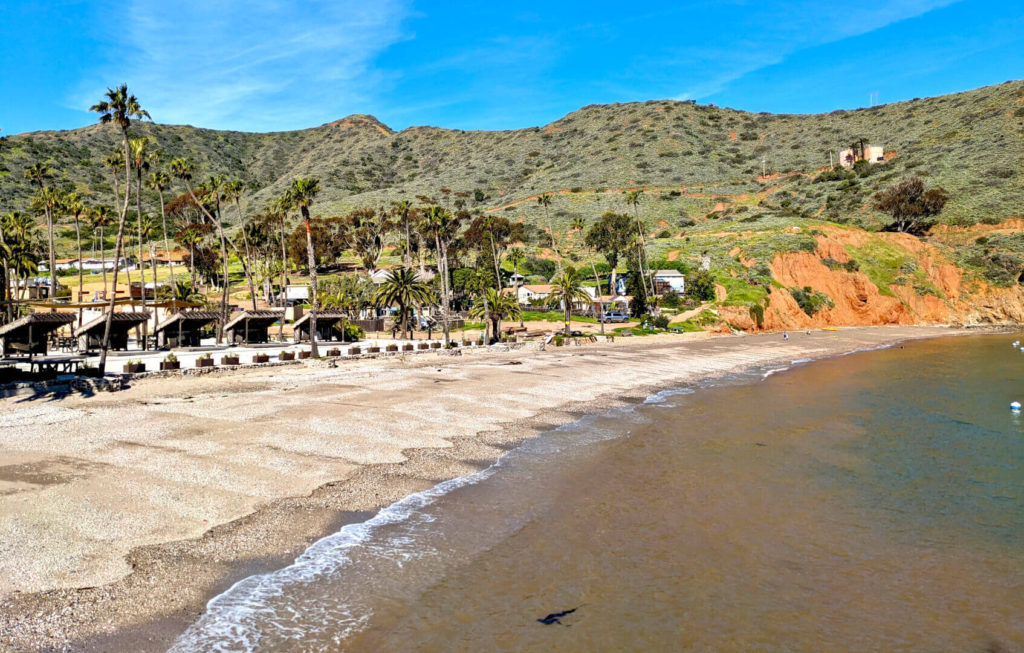
When the outboard on our dinghy was afflicted with fueling issues, we were fortunate to find that there’s an engine shop here in Two Harbors. The mechanics here were very helpful, quick, and fair at getting us back up and running. They even have outboard dollies that you can take out to the dock to ease the transport back to the shop…oh and they can do work on the water if needed. Shop time was $125/hour or $150 on water. They quoted us 1.5 hours to drain the fuel and clean the carb. It didn’t clear it up as well as they expected, so they disassembled it a second time and changed the plug. Total charge was $150 for parts, labor, tax and two gallons of fresh fuel. #CouldaBeenWorse
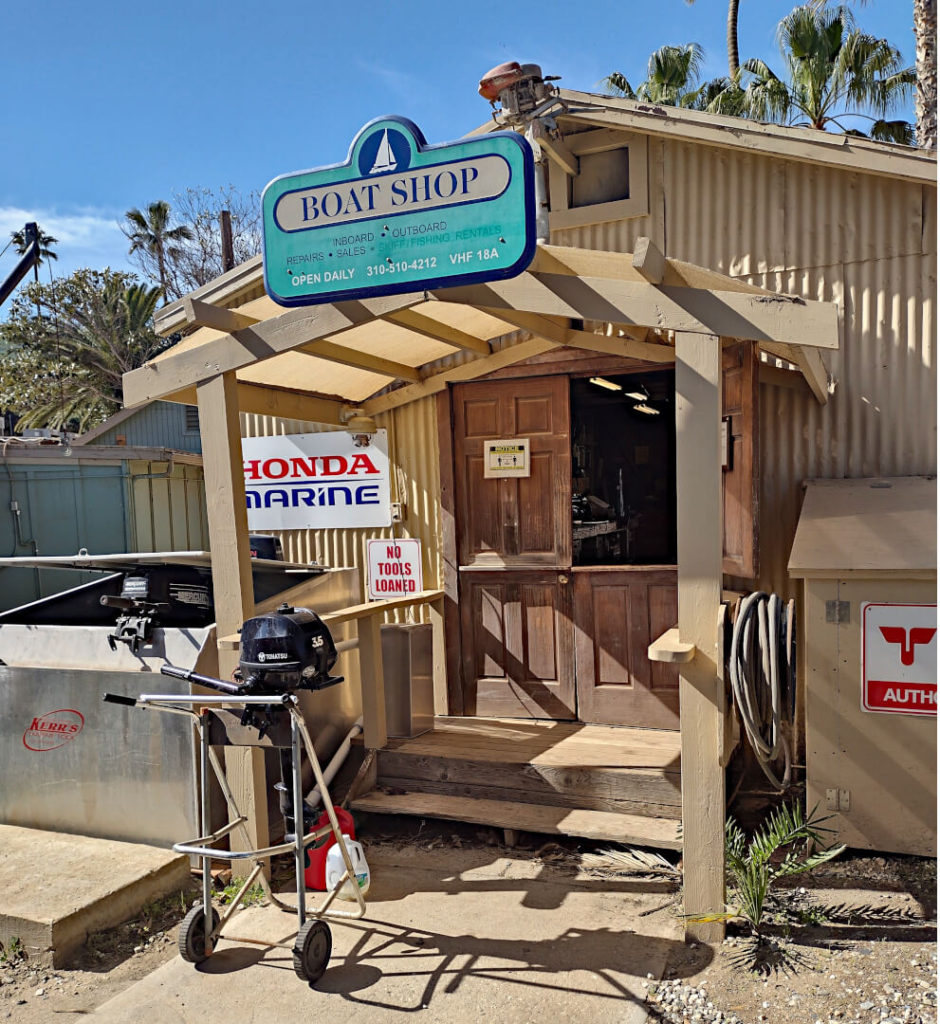
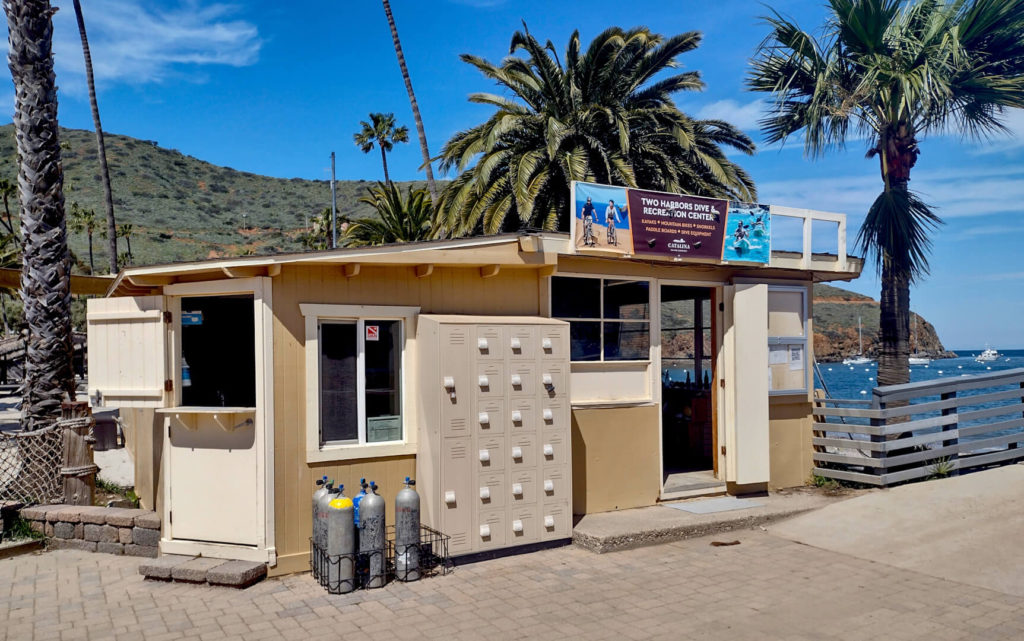
As for activities, Two Harbors is a great jumping off point for hiking. There are campsites, laundry, and hot showers here. Beyond that, there’s a rental shop that rents scuba gear, fishing gear, paddling gear (kayaks and SUPs), mountain bikes (oh, I guess you could bring your own too), bocce ball, and frisbees. Yes, there’s a frisbee golf course here on the isthmus as well. No charge for trails or frisbee golf, but you do need to get a hiking permit online or at the visitor center.
Note that Two Harbors is a company town. The Catalina Island Company operates all of the moorings and commercial activity at this end of the island, as well as quite a bit down in Avalon. This private company, owned by the Wrigley Family (yeah the chewing gum people), is responsible for most of the development , and conservation, of the island and continues to control it.
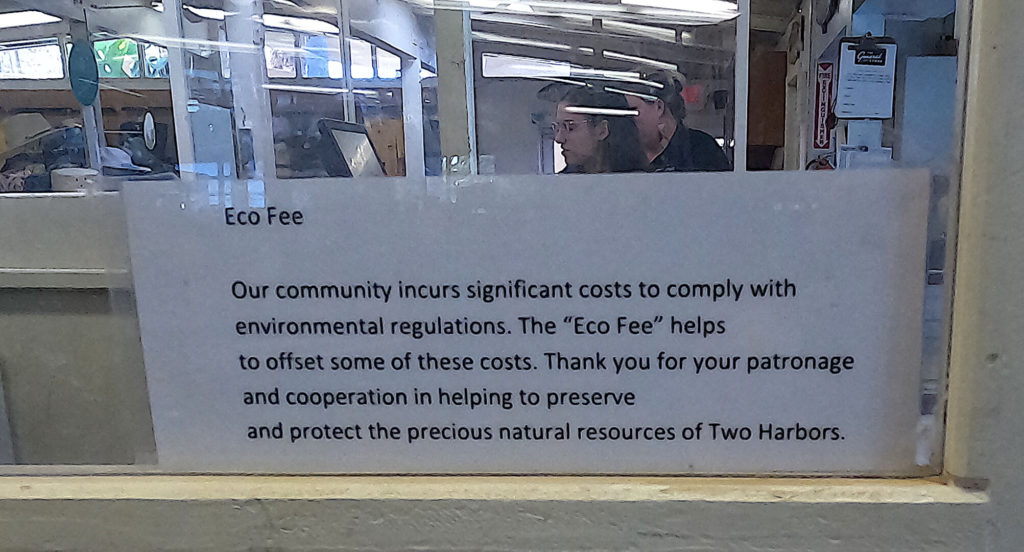
As the Thow Harbors name implies, there is a deep harbor on each side of the island here: Isthmus Cove to the East and Catalina Harbor to the West. The small town in the middle is called Two Harbors.
Catalina Harbor
If you are sailing to Catalina Harbor, on the west side of the island, you’ll more than double your travel time from Long Beach to get around to the other side of the island. Catalina harbor drives deeper between the mountains into the island, making it very well protected. I don’t fully understand the dynamics of the weather here: I fully expected the West side of the island to be rougher as it is exposed to the vast Pacific ocean. However, it was surprisingly calm on this side of the island…at least it seemed so from the shore.
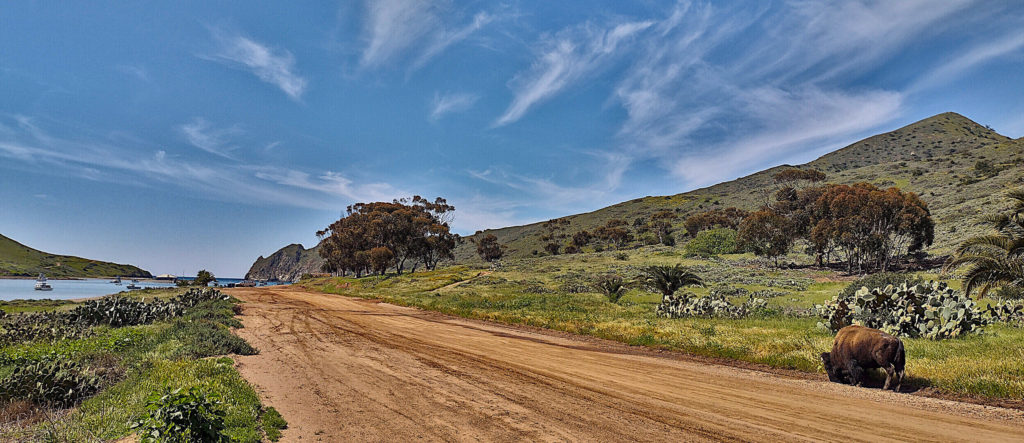
Isthmus Cove
On the east side, Isthmus Cove is one of the closest points to the mainland. The Catalina Island Company says there are 242 moorings here. With almost as many moorings as you’ll find in Avalon in this one harbor, its hard to believe that this mooring field ever fills up. Maybe the conspiracy theorists are right: the Company in recent years has set enough moorings to make it next to impossible to anchor (for free) on the East side of the island, not to increase capacity, but to increase revenue,
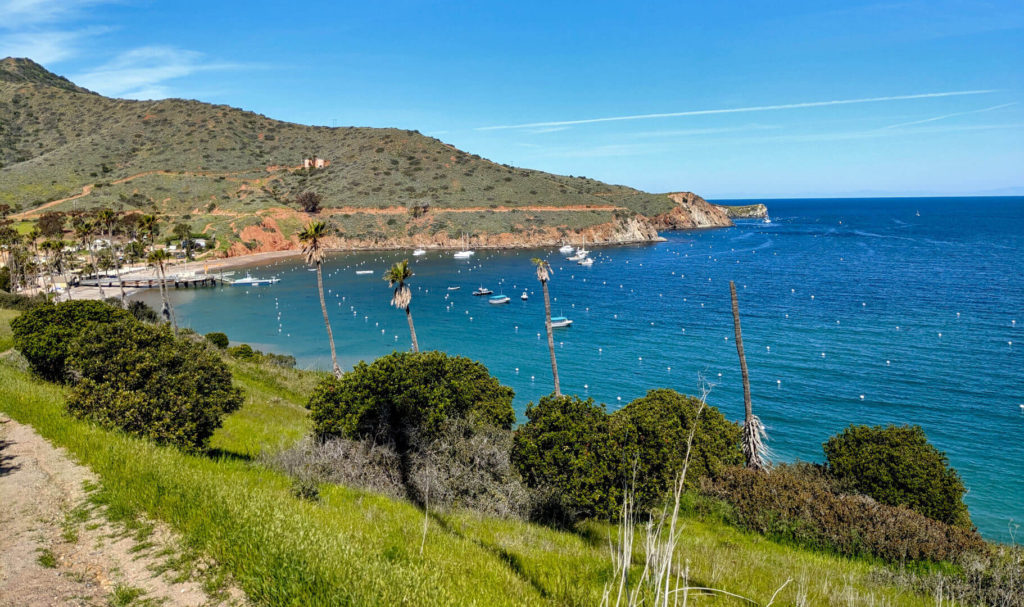
Quieter Parts of the Island
There’s no shortage of little bays all over this island. So you’ve got plenty of opportunity to scout out your own private gunkhole if solitude is what you are looking for.
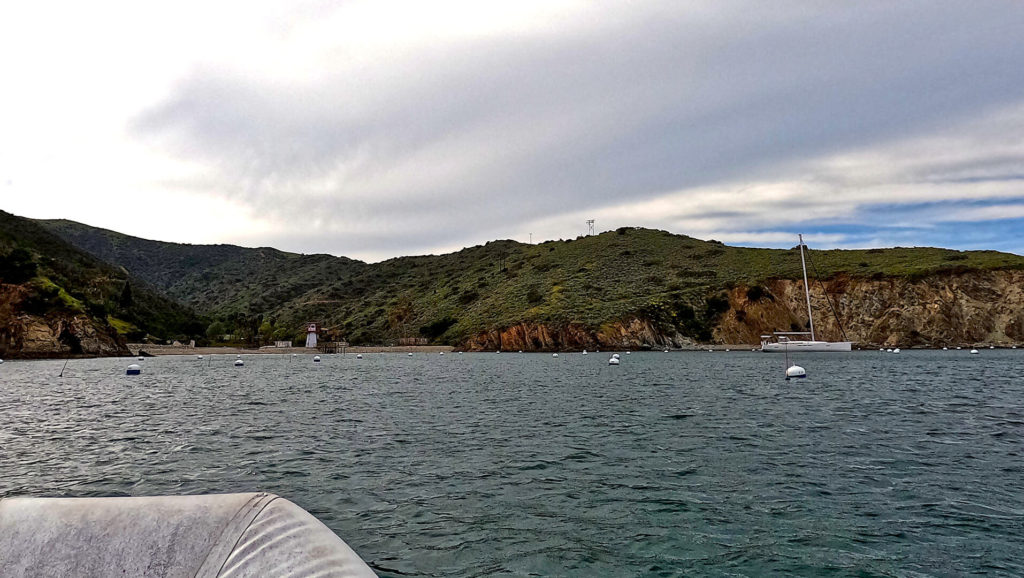
Boat Rental Options on Catalina Island
Renting a Yacht on the Mainland
One reason we came to Catalina Island was because there are several interesting options to rent a vessel in the Los Angeles area and cross the San Pedro Channel as part of the adventure. There are three yacht rental companies currently renting to the public within a day’s cruise of Catalina Island. There are also several member only clubs and sailing schools in the area that I won’t cover here.
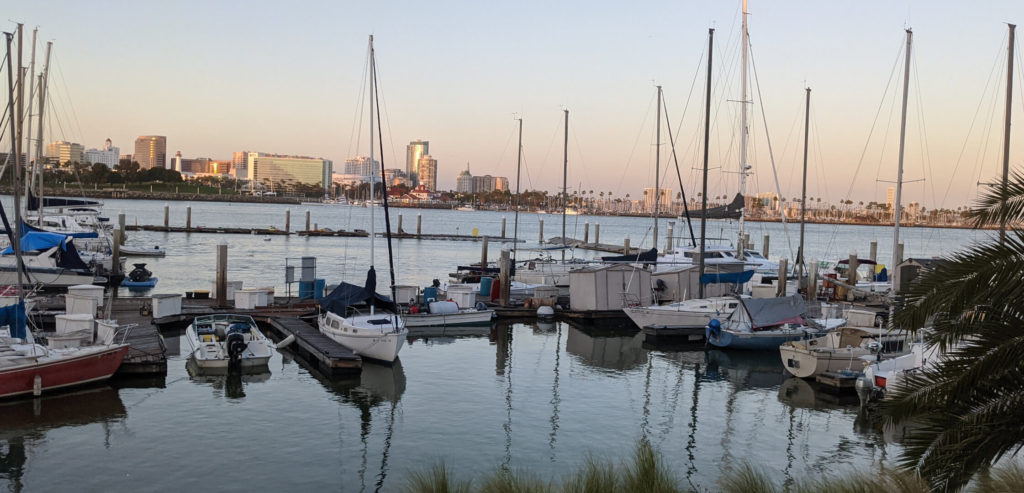
Harbor Yacht Club has the oldest, smallest, and cheapest boats of the three charter fleets. You’ll find sparsely equipped monohulls from 22 to 40 feet and a Lagoon 380 catamaran. Located in Long Beach, just south of LA, you’ll have the shortest sail to the island from here at 22 nautical (25 statute) miles. You’ll also have a comfortable sail both ways with prevailing winds at your beam (side of boat). We chose to charter a Hunter 36 from here due to the proximity to Catalina, low price, and easy checkout. The checkout here turned out to be a little too easy, but we’ll cover more on that in our review of the Hunter 36.
Blue Pacific Yachting maintains a fleet of large, newish sailing monohulls and catamarans. They also have several powerboats and daysailers. Located in Marina Del Ray, you’ll have a longer trip to Catalina with 30 nautical (35 statute) miles to sail to Two Harbors, or 37 nautical miles to Avalon. You’ll also pay a premium for these newer, larger boats.
Windward Sailing Club offers sailing monohulls from 28 to 44 feet as well as one trawler and some electric launches (strictly for harbor cruising). This base is located South of LA in Newport, the capital of Yacht Rock and frozen bananas. Because of the science of triangles, the route from Newport is only 4 miles longer than Long Beach. Keep in mind though that 4 miles in a sailboat is ~45 minutes of additional travel time. Unfortunately, the prevailing winds from the northwest will be coming across your bow on your way out to the island. That means you’ll either motor into the wind/waves or chart a longer route that includes tacking. On the way back, if you know how to use a spinnaker, and your rental is so equipped, you’d have a blast running downwind on the way home. Our first choice was to charter a Hunter 30 here, with a smaller boat saving us some coin on rental and mooring fees (shorter boat) but with plenty of room for a crew of three. However, Windward requires an extended checkout for first time charters, regardless of training or experience, unless you have a USCG Captain’s License. This was a short trip, so we didn’t want to dink around and face the pressure of a test sail.
Jet Ski to Catalina Island
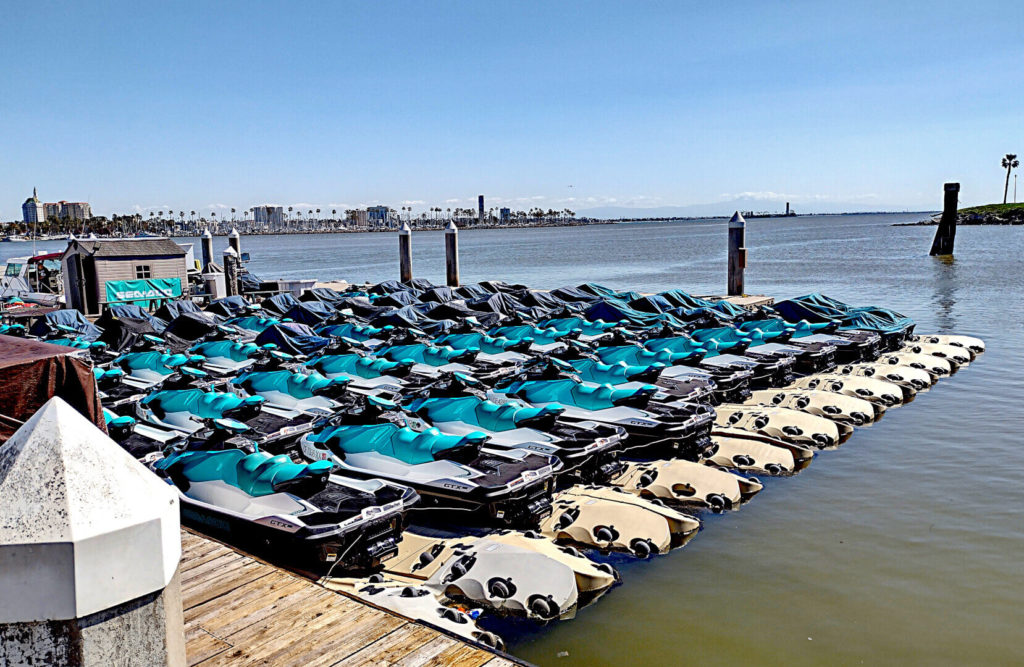
When time is of the essence, or you just have a need for speed, you can partake in a floatilla of Jet Skis that makes a round trip from Long Beach to multiple sites on the island in a single day.
Renting Boats on Catalina Island
There’s a dive shop at Two Harbors (Isthmus Cove) that rents kayaks and stand-up paddleboards. They also have small skiffs available for fishing the bay.
Avalon has a number of options available:
Kayak Catalina Island, on Descano Beach (a short walk from Avalon harbor) , rents sit on top kayaks in single and tandem configurations as well as stand up paddleboards. You can go it alone, or take a guided tours. They also offer wetsuits, which is a welcome option in cooler weather.
Wet Spot, near the ferry terminal, offers the same gear options as Kayak Catalina Island above. However, in addition to renting from the base in Avalon, they also deliver kayaks to the beach in Little Harbor. This is a great option for adventurers looking to explore the West side of the island. Wet Spot has the best price on single kayaks.
Joe’s Rent A Boat on the pier rents single and tandem open top kayaks, stand up paddleboards, paddleboats, and small motorboats with helm steering. The motorboats are barely more than the golf cart rentals on shore…you know which option I’d choose. Joe’s also has the best price on SUPs. Joe’s does not take reservations…so go there if you didn’t and go to the others if you are planning ahead on a holiday weekend.
Sailing (or Boating) to Catalina Island
The boating conditions here are ideal for less experienced boaters looking to make their first ocean crossing.
Wind and Weather
The wind is pretty consistent in the San Pedro Channel (the water between Catalina and the mainland), coming from the northwest. Wind and waves are mild in the morning and build throughout the day. So leave early for a smooth ride or later for an exciting sail. That said, this ain’t no day at the lake. We set sail from Long Beach at 7:30 am and arrived at Isthmus Cove at noon. However, we still encountered 2-4 foot seas, which were enough to cause some chumming of the water. The good news is the period of the waves here tends to be pretty long at 10-15 seconds. These longer period waves tend to be smoother swells that allow more time for the boat to right itself and you to adjust speed and direction for larger waves.
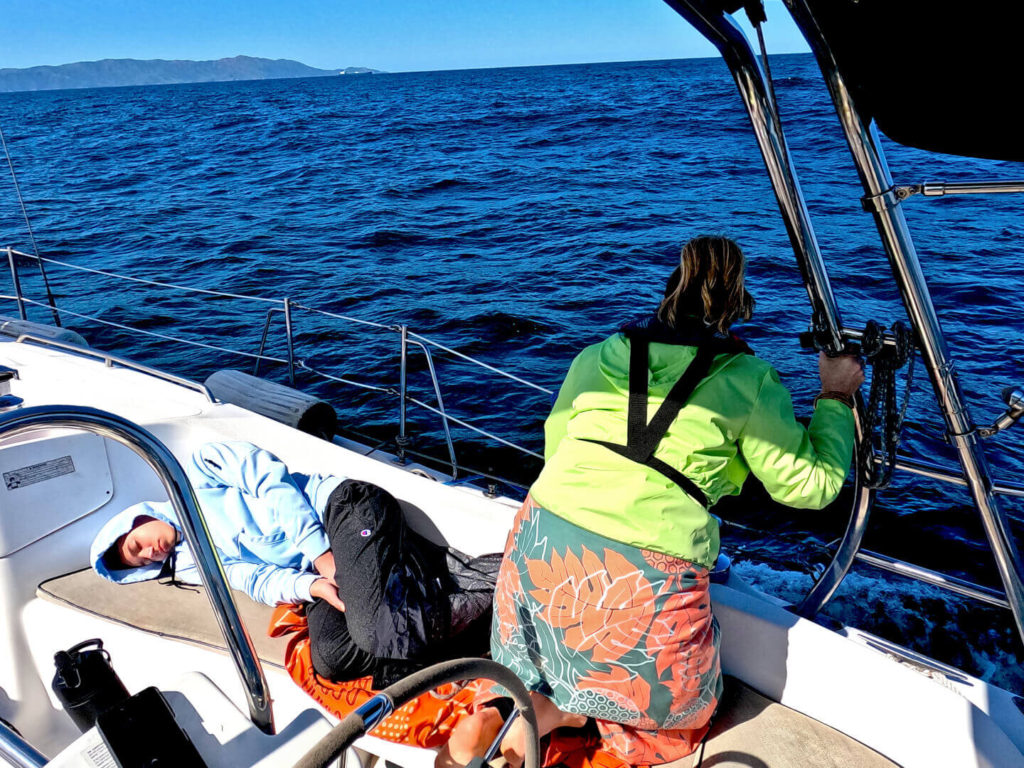
One danger to look out for is the Santa Ana winds. These winds blow from inland California and can be unpredictable and violent. So if winds from the East are forecasted, stay close to the mainland or head back to the mainland. This applies regardless of wind speed in the forecast: weather models are pretty good about when wind will come from the east, but a horrible job at predicting the wind speed. Most Santa Ana events occur from Fall to Spring.
As Tony! Toni! Tone! will tell you, it never rains in Southern California. While its true that Summers in the Los Angeles area are very dry, the area can be hit with occasional atmospheric rivers from late Fall to early Spring. These weather systems can bring several days of torrential rains that cause flash flooding and mudslides.
So, while odds of a calm, dry trip are always in your favor, you must watch weather forecasts and pack rain gear when sailing outside of the Summer. In a stroke of luck, we threaded the needle between two of these storms during our trip in late March. The area saw three days of 0.5-1″ of rain and 20+ MPH winds on both sides of our beautiful, sunny trip.
Navigation
Theoretically, navigation to, from, and around Catalina is by line of sight, You can see Catalina from the mainland and make out distinct landmarks from a distance. You can easily make out the Isthmus as soon as you see the island, because its a low point in between two mountains. When heading toward Avalon, you can see the famous Casino jutting out on a peninsula from a very long distance. However, the infamous Southern California smog can impair your ability to see to the horizon all day long. In fact, a rule of thumb is that if you can see Catalina from the mainland, its best not to go because the Santa Ana winds are blowing the smog off this island. I mean ROTFL amiright?
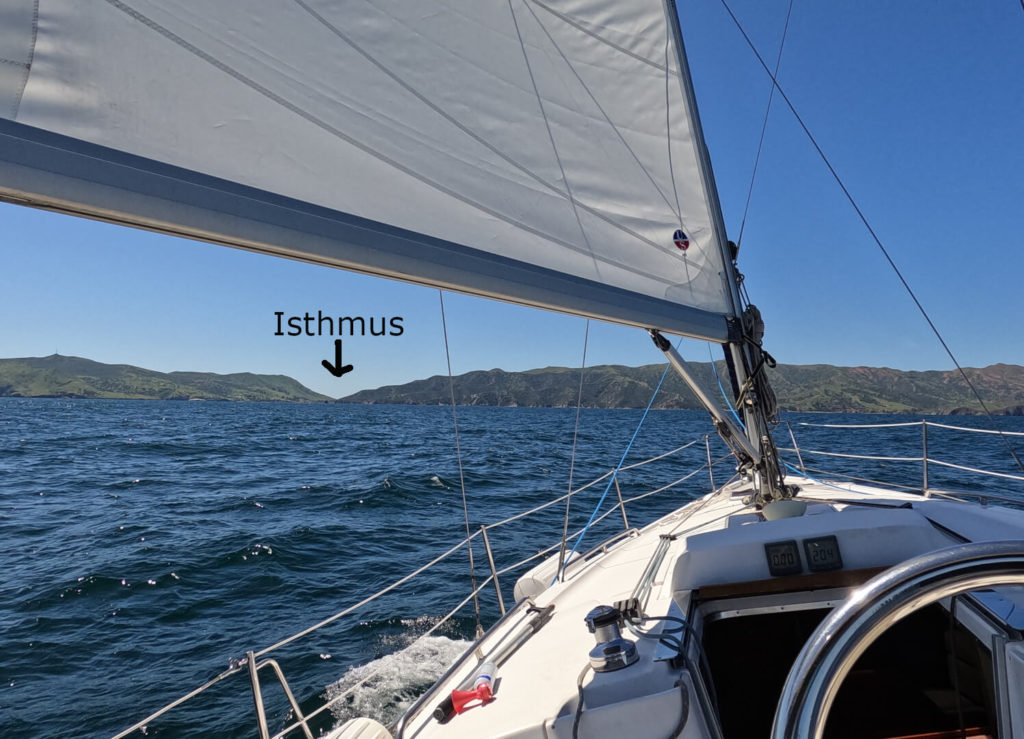
Catalina has a very steep drop off into the sea, so there are few hazards to navigation. You won’t need to cross your heart and say a prayer to Poseidon as you keep some rock 10 degrees off your bow to get through a field of coral on your way into the harbors here. After a cursory consultation of your chartplotter, you should be able to drive right towards the beach with your eye on the depth sounder, stopping when you get too close to zero for comfort.
The biggest navigational concern on a voyage to Catalina are the shipping lanes. The Ports of Long Beach and Los Angeles are the busiest ports in North America, and they are right next to each other. So you’ll need to keep watch for cargo ships, cruise ships, and passenger ferries throughout your journey. I was very intimidated to take our chart boat through the Port of Long Beach, especially without radar or AIS. In reality, it was easy to see which boats were moving, and in which direction. A breakwater spans both ports with one hole for each port channel. You can easily ascertain where ships are headed between these channels and the port terminals.
We did not bring any cruising guides or paper charts on this trip, and none were provided with the charter boat. To get around, we relied on the Navionics Boating App on my burner phone, printouts of the mooring fields we planned to visit (to help us find our assigned buoys), and our eyeballs. We also brought notes with compass headings and distances as a backup.
Catalina Mooring
All moorings on Catalina Island utilize the aptly named Catalina style mooring system. Before coming here, we had zero experience with Catalina moorings or the somewhat similar Mediterranean moorings. We watched a Youtube video and read up on the design. It seems simple enough, but after doing it, I’ll say that it sucks. Nonetheless, we’ve got another box to check on our sailing resume now.
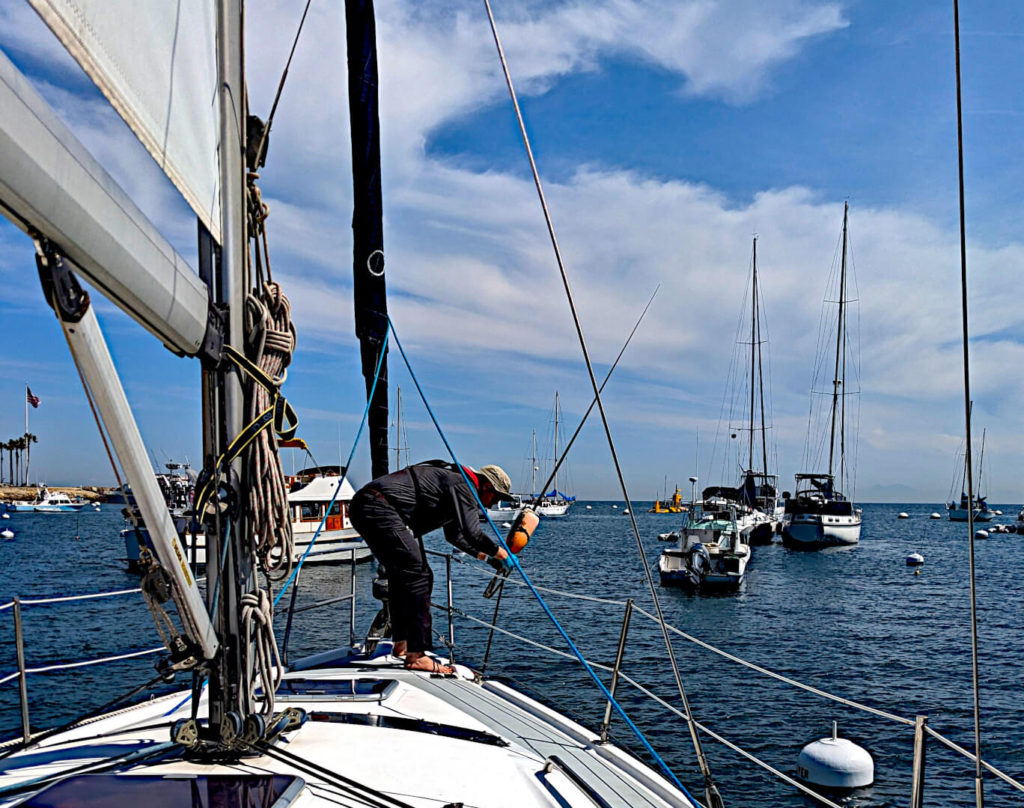
A Catalina style mooring is unique in that lines are anchored to the sea floor at both ends of the boat. A mooring ball marks one end of the mooring, with a mooring line or “bow hawser” attached to a mooring pin that sticks several feet out of the water so you can grab it from the bow without a boat hook. The mooring line is also attached to a weighted ‘slime line’ that runs below water to the “stern hawser” at the other end of the mooring. Once you’ve tied up the bow, you walk toward the stern with the slime line in hand to pull up the stern hawser and attach to…the stern.
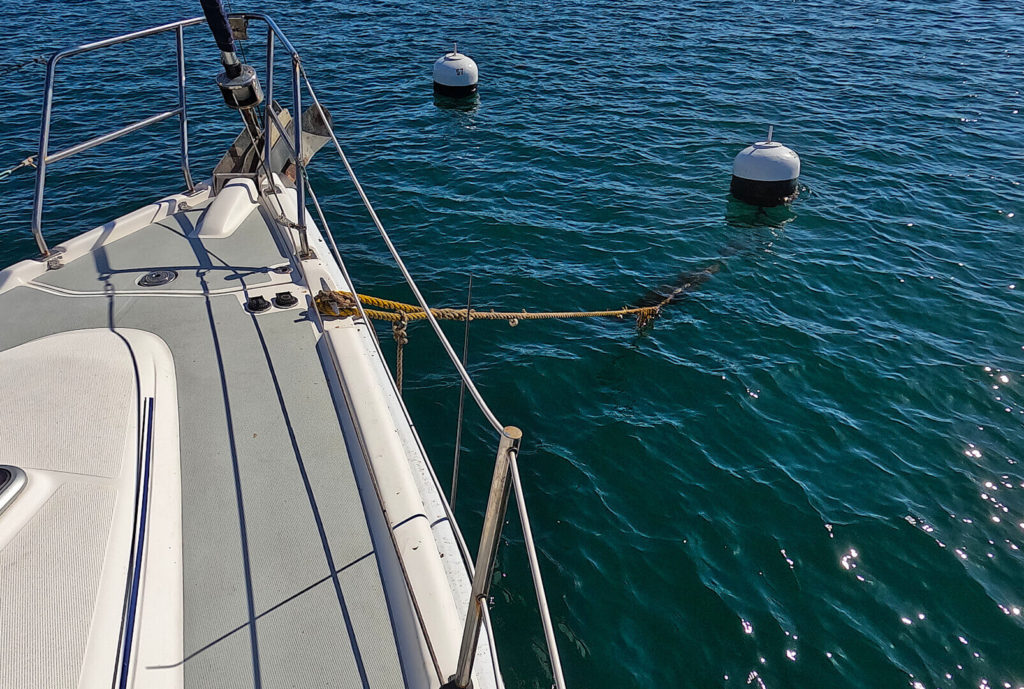
I think the whole thing sounds a bit more complicated than it really is. Instead of three distinct lines, think of the whole system as one line that runs from the mooring ball down to the sea floor at the other end. All of the line is heavy enough to hold your boat, so you aren’t going to break it by tying off the ‘wrong’ section. When you get to the mooring, tie the bow to whatever you can get to onto the cleat; there’s a loop on the end of the hawser, but it isn’t absolutely necessary to use it. Even more so for the stern. Sometimes your boat is too short to reach the stern hawser or the wind is blowing your boat to the side, taking up the slack. So there will be times where you absolutely cannot get both ends cleated to the hauwers and you’ll be glad you read this blog post.
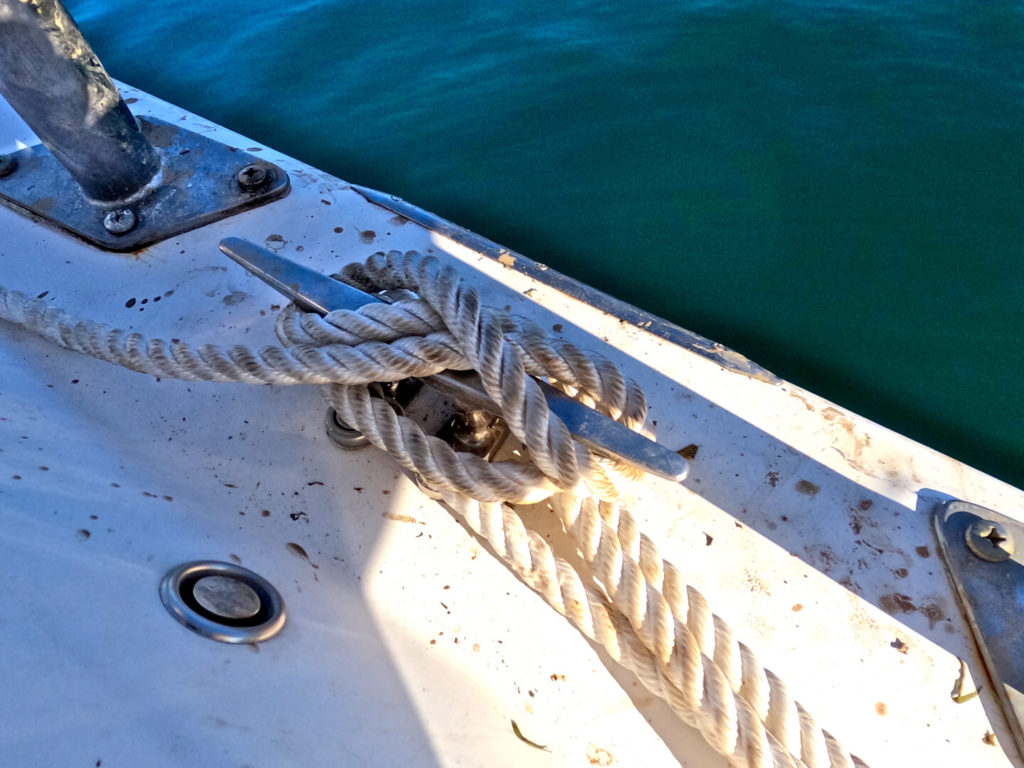
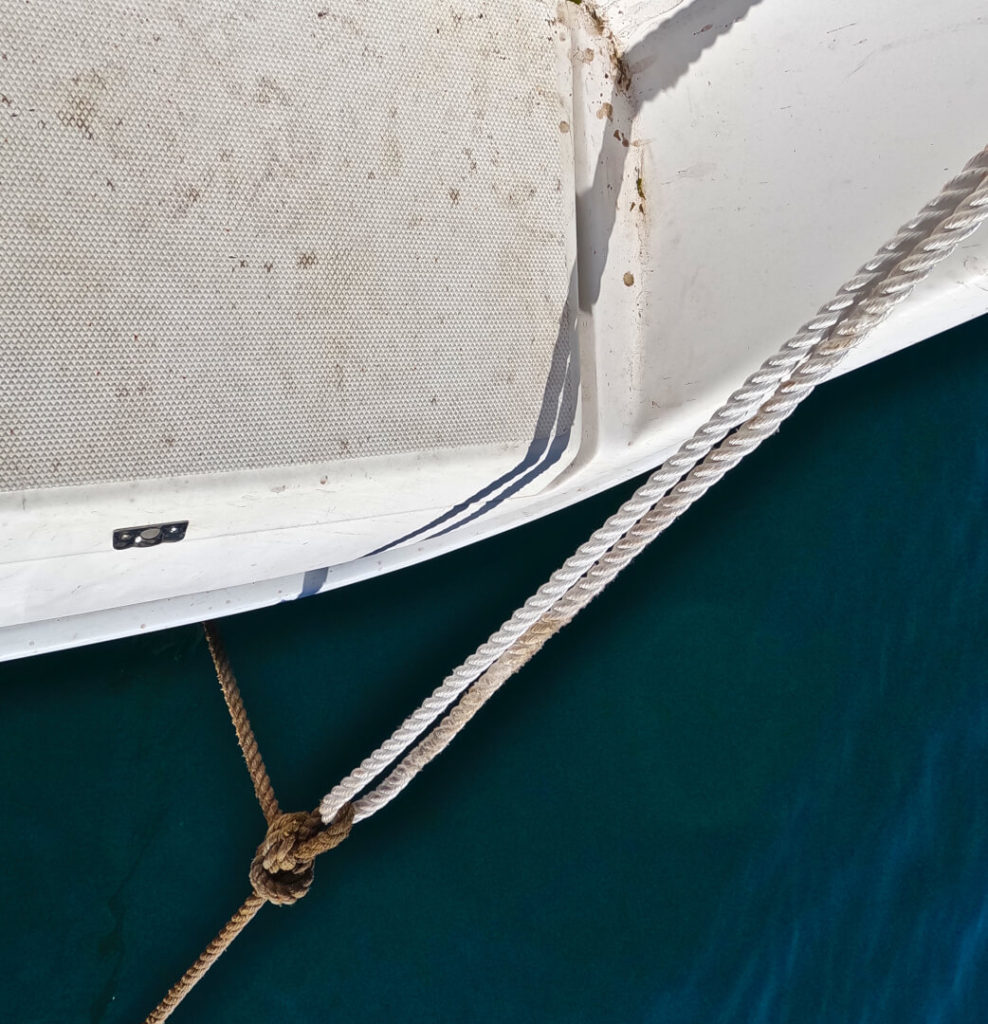
A few other Busy Boater tips for picking up a Catalina Mooring:
- Print a map of the mooring field that you plan to use. When you call the harbormaster for a mooring, you’ll get a ball number that you’ll need the map to locate.
- Make sure you’ve got the lines off your bow and stern cleats before heading into the mooring field. The harbor master got really ticked with us that our docklines were in the way. Its okay to leave lines amidship in case you need to tie off to something.
- Consider putting your fenders out just in case you get close to other boats. We left our fenders out while in the mooring field because you never know when some other noob gets put alongside you.
- Keep some line handy to tie between your stern cleat and the slime line in case there isn’t enough slack.
- There are metal weights tied along the slime line to keep it deep in the water, away from your prop. It requires some attention to keep these from banging against your boat.
- Wear gloves, glasses, and dedicated pear of pants to get dirty. Slime line really is a friggin’ mess. Those pristine white lines in the video above are total bullshit; they must have filmed on the same day the mooring was set. The line was covered in algae and kelp that splashed droplets of funk all over our clothes and all over the place as we walked it up the side of the boat.
Stern To Moorings
When we arrived at Isthmus Cove, they told us we would moor stern to. I naively assumed that meant stern to shore, but with the bow to the mooring ball. Nope. The stern goes to the mooring ball (and the shore). The harbormaster came out and pulled what would normally be the stern line and brought it to our bow. Then the crew pulled the line back to the pin/buoy for the stern that we’d normally pick up first. So, if you see the boats moored with sterns toward the shore, you’ll be tying your stern to your mooring.
The boats sit pretty evenly between the mooring balls so its hard to tell which one they are actually tied to…this is, however, an important distinction because you don’t want to cross between the boat and the mooring ball its tied up to because that mooring line is not as deep as the other end.
One really handy deal here in Catalina is you can get around without a dinghy. In Avalon and Two Harbors, you can hitch a ride on the shoreboat to get to the dock. However, it can get expensive quick at $4-$10 per person depending on which mooring field you are coming from.
Why Do Catalina Moorings Suck?
We’ve already discussed the mess you’ll make on you and your boat with the slime line and the confusion of stern to moorings. More things that suck:
- Mooring fees are about $60 per night for a 30-40 foot boat.
- In ability to swing with the wind causes the boat to rock and roll in the weather and limits your airflow through the boat.
- The Catalina mooring system allows boats to moor very close together, so on a crowded weekend you’ll get to know your neighbors for better or worse.
Mooring Availability
One of my biggest fears of boating is finding a full anchorage without enough time to find an adequate alternative before sunset. The big upside of the Catalina mooring system is that it has allowed for probably close to 1,000 moorings to be set around the island. This makes plenty of moorings available on all but the busiest holiday weekends. If you are concerned about finding a mooring (like I was), you can mitigate the risk in several ways
- Make a reservation at Two Harbors. These reservations allow you to choose a preferred mooring at the time of booking. While this offers peace of mind, options are limited, there’s a $10 fee, and a two night minimum.
- Heading towards Two Harbors will increase your chances of finding a mooring even without a reservation because it is less popular but has more moorings than Avalon when you include the alternative nearby mooring fields and anchorages.
- Monitor mooring availability at Avalon. No reservations are allowed here, unless you own the mooring. However, you can check online for realtime mooring availability.
- Rent the smallest boat you can. The smaller the boat, the more moorings you’ll fit into. Smaller moorings are also closer to the shoreline, meaning a shorter dinghy ride.
- Be prepared to anchor with lots of rode (chain or line) in case you cannot get a mooring.
- Monitor the weather. There are only a few anchorages that are truly protected from the Santa Anas. These anchorages will fill up fast when the weather picks up.
Anchoring on Catalina Island
Because many of the harbors on Catalina Island have been strung with mooring balls and the the island drops off quickly into the ocean, opportunities for anchoring are limited. despite a many small harbors dotting the island. If you do choose to anchor, bring lots of anchor rode, and consider reading Anchoring at Catalina: No Moorings? No Problem! This book provides detailed anchoring advice for 22 coves around the island.
Some people carry on about an excess of mooring balls being set out of greed to discourage anchoring and increase revenue. I guess at $50 to moor a 36 foot boat for one night, its hard to disagree. However, the Catalina mooring system allows for a very dense mooring field. This allows for many more boats to find a safe harbor in a very busy/popular destination. Without these mooring fields, we’d likely be complaining about drunk/amateur boaters banging into us all night in crowded anchorages.
Support for Boaters on Catalina Island
The…uh…school of hard knocks showed us that there’s a lot of support for boaters on the island. We had a great experience with the marine mechanic in Two Harbors. BoatUs has a franchise in Avalon with at least two tow boats. Avalon has a marine mechanic, but they were booked out for weeks when we were there. Marine mechanic in Two Harbors was great. However, mechanics can take same day ferries from the mainland, and boaters can take them back when needed.
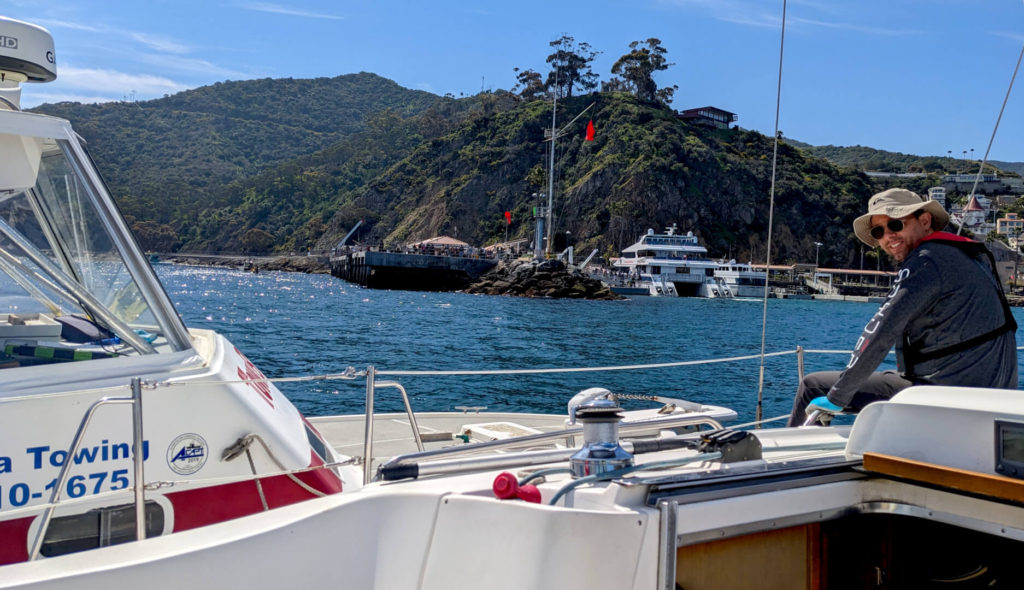
When to Go to Catalina Island
Based on operating schedules and prices, the high season on Catalina runs from May through September with April and October on the shoulder. Holiday weekends during the summer will be the busiest with the Two Harbors moorings having a longer minimum stay and your chances of picking up a mooring in Avalon thinning out if you can’t get there early on Friday.
While you’ll need to hit the high season to lay on the beach in a bikini, the weather is hospitable year round with August and September being the most dry and settled. Winter does bring a higher risk of Santa Anas which could really wrinkle a trip planned on a tight schedule.
If you plan on going to Avalon, check the Cruise Ship Schedule before firming your dates. A cruise ship holds around 3,000 passengers that will be competing with you for real estate on the beach, reservations and spots in line. Additionally, the cruise ship PA systems echo through through the valley like some kind of 1984 meets Charlie Brown’s mom mashup.
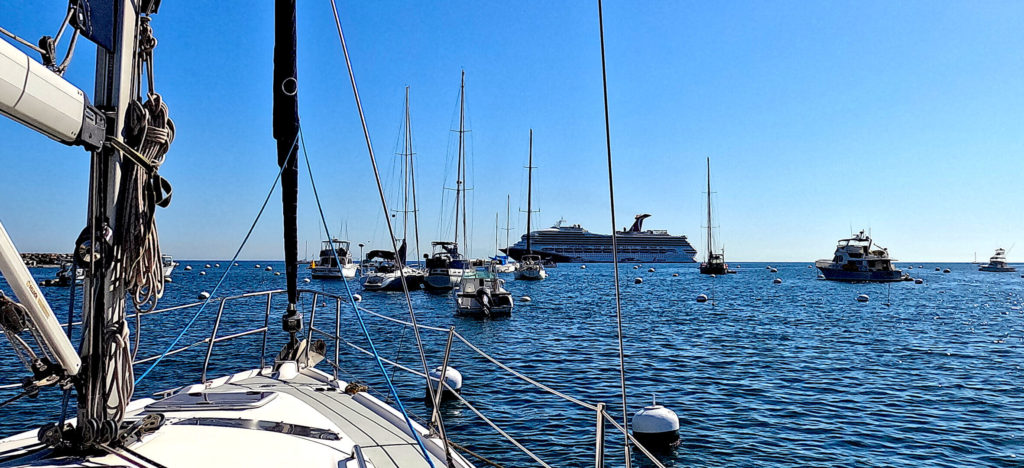
Getting to Your Catalina Island Yacht Rental
Los Angeles airports
To pick up a charter or ferry to Catalina, you’ve got several airports to get you into the Los Angeles area conveniently:
LAX – The Los Angeles International Airport is a complete poop show that should be avoided if at all possible. The traffic near the airport and in the terminal can easily add an hour to your trip each way. This means that in many cases a connecting flight to one of the other airports may actually save you some time. On more than one occasion, I’ve sat in one of the parking lots that they call a freeway in LA sweating my flight time and enjoying the sweet smell of spent diesel and kerosene. With all that said, Marina del Ray lies just north of LAX, so this is the most logical airport for picking up charter out from Blue Pacific.

LBC – If you live in a city with direct service to Long Beach, and you like flying Southwest, this is the ticket. This will obviously be the easiest airport for picking up a charter or ferry in Long Beach.
SNA – Located just East of Newport, its the obvious choice when renting from Windward Sailing. Its also a very easy airport to get in an out of, so its my preferred airport for Long Beach since there’s no flights into LBC from Portland. Yes, miles wise LAX is closer to the cruise docks, but check the travel time with traffic and your 30-60 minutes from either airport with Uber and Lyft getting you there for under $40. The lack of a terminal poop show gives SNA the advantage.
BUR – Located further inland towards Pasadena, the Burbank airport is passable for Long Beach and Marina del Ray. Its an incredibly small airport that can make up for the longer distance with a faster ingress/egress.
Ferries
If you are taking a ferry to Catalina, the Catalina Express sails from San Pedro to Avalon and Two Harbors. They also sail to Avalon from Long Beach. The Catalina Flyer sails from Newport to Avalon. All are about $40 each way and take a bit over an hour. These are passenger ferries (no cars), but take longer to board and embark than any car ferry I’ve ever been on. They want you to line up like a half hour before boarding. Like any good good ferry, alcoholic beverages are available on board. Oh, and they do sell out, so be sure to book ahead if your timing isn’t flexible.
You can also get to Catalina aboard a cruise ship. Avalon is a popular stop for four day cruises running between Long Beach and Ensanada.
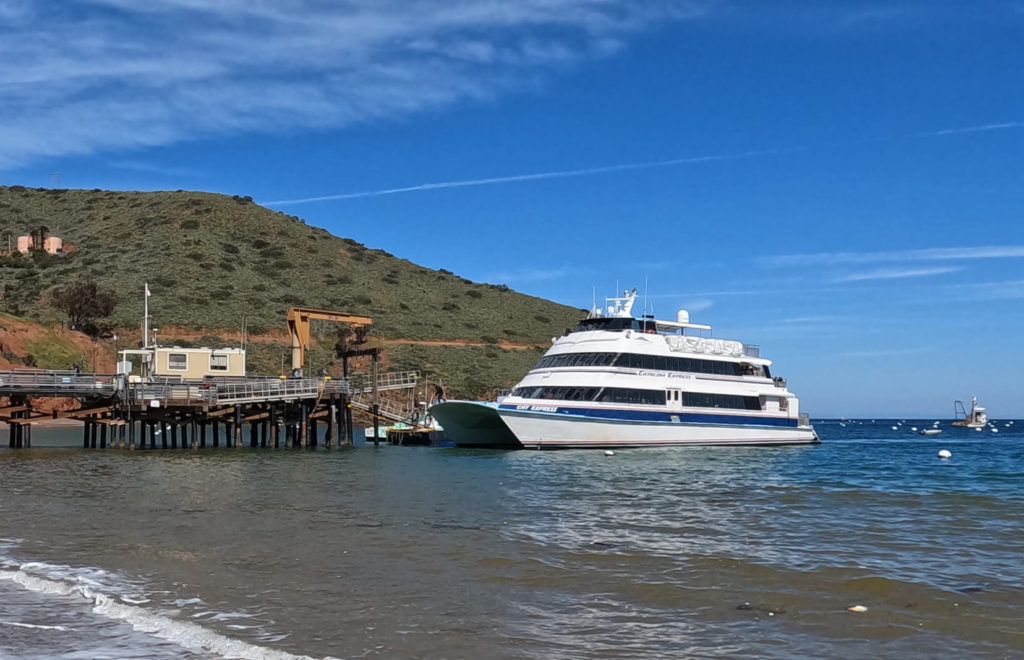
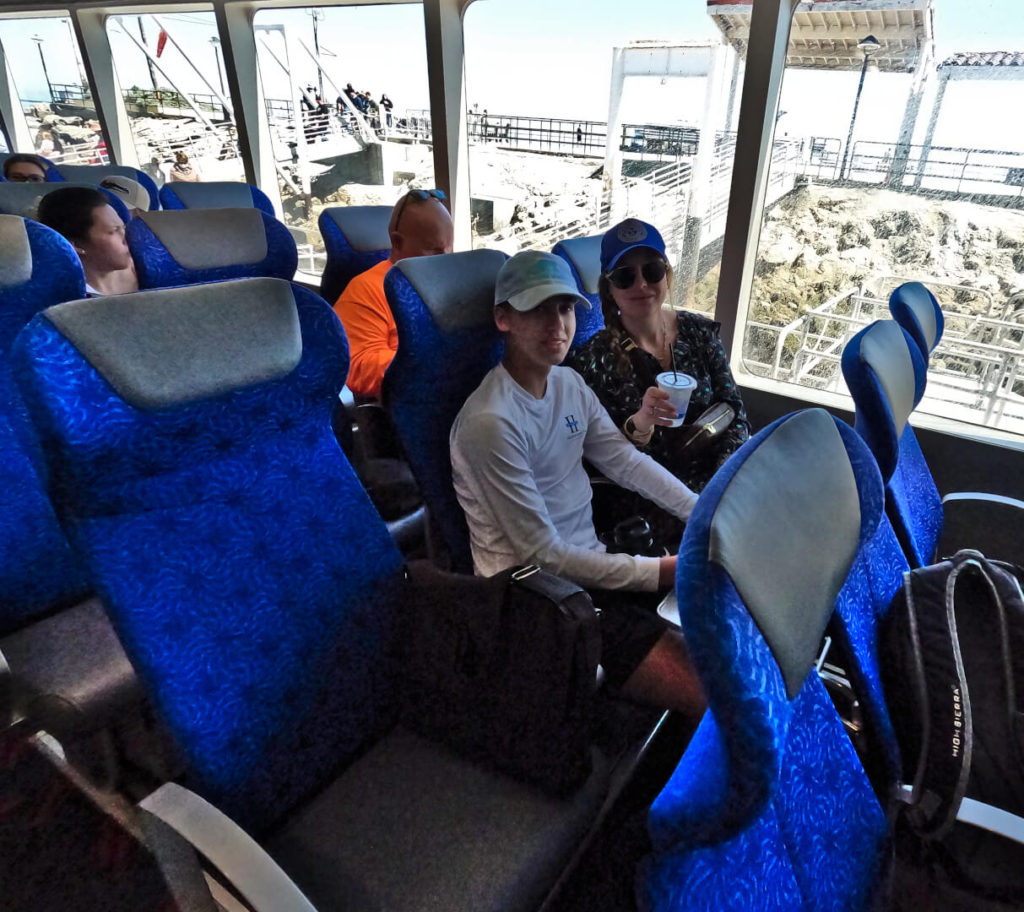
Planning
How Long to Stay on Catalina Island
The trip to Catalina Island is easy, so you can have a fine time with one overnight, and many of the locals do this. However, enough to see and do here that you wouldn’t get bored in a week.
We took a four day/three night trip to the island, with a sleep aboard the night before. The sleep aboard allowed us to get settled and provisioned and leave early the morning of day 1. This meant we had two and a half days on the island with the final day to get back to the mainland and catch our evening flight. We spent our first two nights in Two Harbors and the final in Avalon. This was enough time for each, but with more time, we could have sailed into some of the smaller harbors to explore.
With a different crew, we could have spent more time sailing instead of taking the express route of motor sailing. If the weather was warmer (or we brought wetsuits), we’d have spent more time snorkeling too. A circumnavigation of the island is 40 miles, which could swallow several days.
What to Pack for a Sail to Catalina Island
Regardless of the time of year, pack some layers. The weather here is mild and mostly predictable. However, the sun shines bright all year and the wind can pick up. So, when we were there in 50-60 degree temperatures, we were hot in the sun, but cold when the wind was blowing in the shade.
You can rent snorkel, diving, and fishing gear on the island, which will allow you to leave big, heavy stuff at home. The water is chilly year round, so plan on bringing or renting a wetsuit (or shorty in summer) to snorkel or scuba. That said, the water is pretty clear and there are lots of beautiful fish and caves, so plan on getting your face in the water.
Your cell phone with Navionics can get you to where you are going, so don’t sweat packing charts or other nav aids. Only pack binoculars if you plan to birdwatch.
Provisioning for Catalina Island
There’s a Von’s (Safeway) grocery store in Avalon and the general store in Two Harbors is incredibly well stocked. Prices, however, are high as you’d expect on an island supplied by contracted ferry service. Try to pick up as much as you can before leaving the mainland, but there’s no need to overprovision or stress to much about forgetting something.
What Skills and Experience do you Need to Sail to Catalina?
The voyage to Catalina Island is a true ocean crossing that puts you more than 10 miles from land at the half way point. So, despite the mild conditions and good support, you need to be comfortable making an assessment of the weather, reading your chartplotter (or nautical charts), and using a VHF in the event you need to communicate with ship traffic or to call for help. While Catalina moorings are theoretically easier than docking, you’ll need to be much more comfortable with close quarter maneuvering than if you were anchoring or using a traditional mooring field.
The charter companies here will, at a minimum, review your sailing resume before allowing you to charter a yacht. Beyond that, when we arrived at the dock, Harbor Yacht Club simply asked if we were familiar with the boat, and if we’d said “yes”, we’d have been on our way no questions asked. Windward Sailing, on the other hand, requires a check sail for anyone not carrying a USCG Captain’s License.
What Does it Cost to Sail to Catalina Island
The cost to get to Catalina Island is pretty reasonable given the myriad of options for flights into Los Angeles, frequent ferry service for about $40, and a range of yacht charter options.
Catalina Island itself is not cheap. The moorings are $40-$60 per night, plus $25 for advance reservations. Alcoholic beverages are double digits and the food prices are pretty steep, especially considering the quality. Diesel and gas were both about $7.50/gallon (compared to $4.00 in LA) and hose water was $1 for 5 gallons. Fortunately, credit cards are accepted everywhere (including moorings), except one of the golf cart rentals.
Fortunately, most of your trip costs can be controlled with some planning:
- You can save a lot of coin by provisioning on the mainland before heading out. However, if you are coming in from the East Coast, even LA grocery prices might be a bit surprising.
- Jumping off from Los Angeles means that your likely to find a decent price on an easy flight in from just about anywhere.
- Availability of a wide range of boat sizes and age also gives you the opportunity to find the sweet spot of price and comfort.
- Some of the charter companies offer memberships: renting for even three or four days as a member can be cheaper than for non-members, so be sure to consider that option.
- Our charter included enough fuel and water that we did not need to buy any on the island…well, except for replacing the outboard fuel while trying it running.
- Anchoring is free if you can find a suitable spot.
- In the off seasons, the Two Harbors moorings offer a good deal for longer stays (or a horrible one for a short stay).
The total damage for our five day/four night trip for three people cost $4,900. We could have done it for less than $4,000 by renting a smaller boat. We could have further reduced the cost below $3,000 by traveling off-peak (we paid a premium for Spring Break airfare) and eating more meals on the boat.

*Excludes cost for outboard repair, towing to Avalon, and ferry tickets which we’re still working on getting reimbursed for.
Final Word
Rachel and George both said this was there second favorite boat trip of all time (they each have different firsts). For me, this was a fun, easy, low stress trip that was much less expensive that our Spring Break in the Bahamas last year. We’d do it again with a different charter company and bring wetsuits and fishing poles to explore more remote parts of the island and (hopefully) catch some nice fish.
